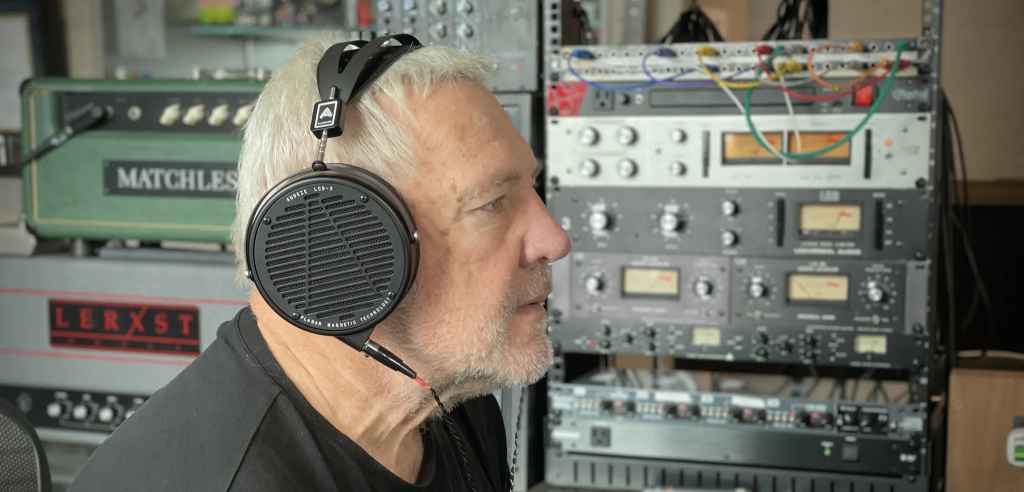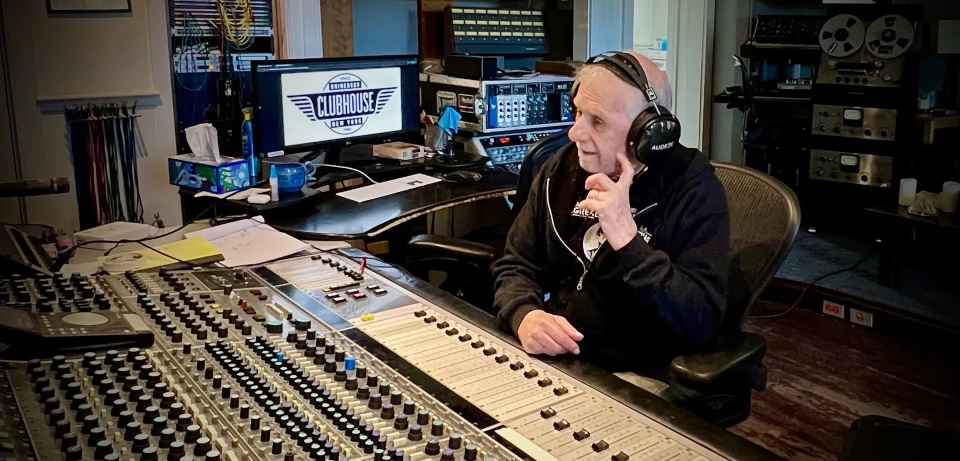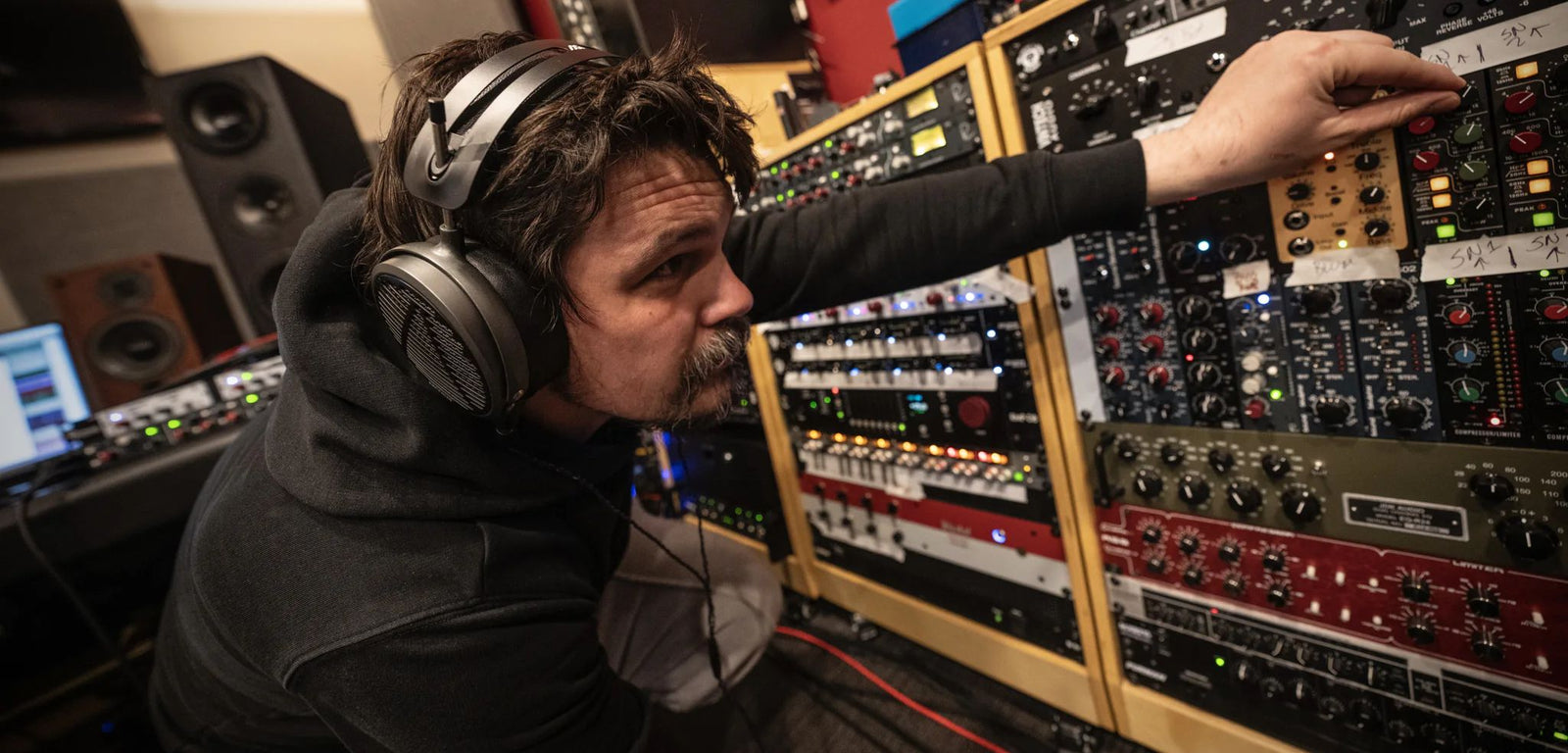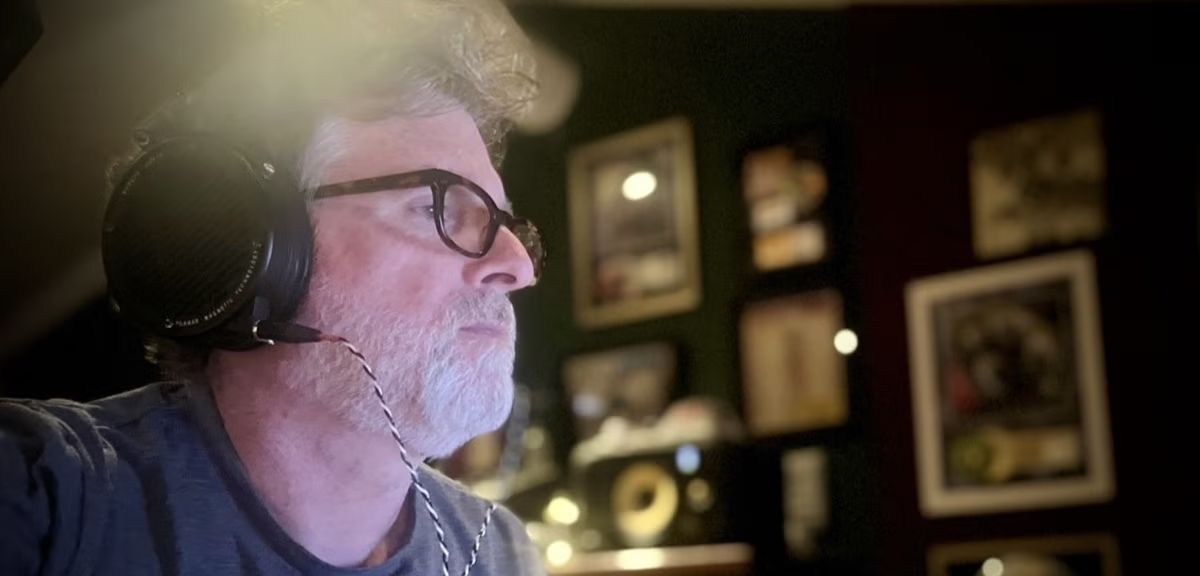
Alex Lifeson is a Canadian musician, best known as the guitarist of the Canadian rock band Rush.

Elliot Scheiner is an engineer and producer. He started working for Phil Ramone at his A&R studios which at that time was considered one of the best studios in the country.

James 'Jimmy T' Meslin is a Grammy winning recording, mix, and live sound engineer based out of Long Island, NY. He's probably best known for his work with prog-metal giants Dream Theater and their affiliated projects.

Dave Way has been mixing longer than he hasn’t. Platinum albums, No. 1 singles, 4 Grammys, 19 Billion streams with names like Michael Jackson, Fiona Apple, P!nk, Xtina Aguilera, Ringo Starr, Iron And Wine, Sheryl Crow, Marshmello, Fall Out Boy, Kesha, Macy Gray, TLC, Victoria Monet, Sons Of Anarchy, Tracy Chapman, Ben Folds, John Doe, MC5, Spice Girls, Weird Al, Paul McCartney, Bobby Brown, Mick Jagger and many, many more.
January 09, 2024
After playing percussion for 33 years and touring in 30 countries, Petter Berndalen shifted his focus to working with music production. Now he runs a recording studio, record label, manufactures microphones, and also works more and more with film production.

Ola Sandström´s album "Aska" is probably what I am most proud of. A perfect representation of the essence of my way of working as a recording engineer and music producer. This entire album is recorded/mixed just with gain, while tracking. During mix all faders stayed at zero, no EQ, no compressor, limiter or any other plugin was added. The reverb is Bricasti M7, which was patched in during tracking. The very same amount you hear on the album, musicians had in their headphones while recording. The vocals are recorded with a clone of U47 inside a M49 housing, that Jörgen Thuresson and I developed together. Preamp/AD is Cranesong Spider. Ola´s guitar is recorded in blumlein stereo with two Thuresson CM 402. Listen to violin and accordion in the opening track "Lilla Charles, sov sött I frid." I positioned the musicians in relation to the blumlein microphones exactly as I wanted them positioned in the soundstage in the finished mix.
Highway Honeys song "Catch me if you can" is recorded with just one mic. A custom built small blumlein stereo mic by Thuresson. Of course no EQ or dynamic processing. And as usual, a small dose of Bricasti reverb. As you can see, the singers on the sides are standing with each shoulder just behind the shoulders of the singer in the middle. This is because the lead voice would come forward a bit and so that I would get the exact stereo width that is heard on the recording. In order to get the right volume on the double bass, I had to move the mic to exactly where it is seen in the video.
Trio Circle - Prelude / Contours , yet another recording that was mixed at the time of recording. All faders on 0dB. A bit of Bricasti M7 on tenor saxophone. That’s it. Drums: 67 clone on bass drum, right next to the bass drum pedal. CM402 as OH. Double bass: I lined up some alternatives, but ended up with only SM7b. Tenor saxophone: Custom built prototype of our coming M49.
The SMT Wing Diffusors is helping me in almost every recording I make, bringing out clarity and the richness of detail. They also clarifies the placement of the instruments in the soundstage.
Freeman Fox / Berndalen - Improvisation Take 2 A golden moment in my career as a percussionist. This recording is from the very first, and so far only time I met Canadian fiddle player Jaron Freeman Fox. We said hello to each other, plugged the instruments into the recording equipment, each had a double espresso, and then 4 takes of free improvisation.
Here are some favorite albums on which I play percussion:
Fri Form Folk (2019)
This is How we Fly (2017)
NID (2013)
Tandoori Hill (2009)
Recording technician/Music producer/Percussionist. I immortalize acoustic music and help present it as a kind of heightened documentation of reality. Often I am also a musical advisor and co-creator, by creating big musical changes by using small, well-chosen words. People choose my recording studio because the musicians trust me on a artistic and musical, as well as technical levels. It quite often happens that I join in and play percussion. After all, performing rhythms has been my main occupation for most of my professional life.
At the age of 14, I became interested in drums and heavy metal. However, it didn't take more than 2 years as a beginner before my teachers introduced jazz to me. Jazz became my new love and after primary school I started studying jazz at private schools. After four years of full-time jazz studies, I made the transformation to Swedish folk music, which had piqued my attention since childhood. That led to 6 years at the Royal Academy of Music in Stockholm, Sweden and that I became the first in my genre, drums and Swedish folk music, to get a master's degree. Here is a TED talk that tells about my journey from heavy metal drummer teenager up to my master's degree in folk music in 2009. In 2006, I became interested in sound and especially HiFi. It was also the year that I, as a musician, started to participate more on albums with different bands and artists. This two initially separate interests, the journey towards an uncompromising sound system at home in my living room and recording albums in various studios with my bands and projects, gradually approached each other. In the end, they were united in a passion that overshadowed life as a touring musician. And now I have a 100 sq meter studio with all the microphones and outboard one could wish for.
To, as a musician and drummer, completely immersed in traditional jazz and improvisation, move forward with hitherto usurped knowledge, into the rhythmic and melodically world of Swedish traditional folk music. It's the most amazing shift I've ever made. Professor and fiddle player Sven Ahlbäck has been my main guiding star when I 2001-2008 explored and invented the role of drums in Swedish fiddle music, together with all the fantastic musicians at the Royal College of Music in Stockholm. Here is a link to a 99 minutes long video/interview/lecture about that journey. The two drummers who influenced me the most are André Ferrari and Terje Isungset. Two unique and insanely inspiring people. Both on a musical, personal and philosophical level. My rhythm partner, American percussive dancer Nic Gareiss in our band This is How we Fly. Interaction beyond words, via hands and feet straight through the heart. Sigge Krantz is a Swedish sound engineer whose calm, positive, curious personality has become a very big role model for me. His spirit and beautiful ways is always in the foreground when I meet people I work with. Sound engineer Martin von Schmalensee has taught me a lot about how sound, musicality, timing and groove are connected within the framework of studio recordings. Audio electronics oracle Jörgen Thuresson has shown me that there are no limits to how good something can sound. Technology can never stand in the way of art. If it doesn't sound the way we want, we tame the electronics, and we don't stop until we reach nirvana.
Before I learned about gain staging, I nurtured the idea that all recorded channels would have a peak of around -6dB. Which resulted in a lot of trouble that all the faders ended up very low and that fine adjustments of the volume became more difficult to implement. At this time I liked plugins that emulated vintage gear. I sent my hot tracks into these plugins and occasionally got the sound of distortion. I didn't understand why. I have also accidentally immortalized the sound of phase errors, which unfortunately was also not detected in the mastering process. And finally ended up on a published CD. Today, I see gainstageing as something sacred that is always at the forefront of all productions. I have taken it so far that I have as a goal that when my recordings are to be mixed, preferably all faders should stay at -0dB If I use plugins today, my signal level is never a problem, as it could be in the past. Today, I always think about phase when placing microphones. A trick I often use is to use figure 8 microphones. Not just ribbon microphones. I have many condenser microphones that have two outputs. One for each side of the capsule. If I phase flip the back of the capsule, I get an 8. And thus I eliminate sounds that would otherwise create phase problems.
The room is my most important tool. The ceiling and walls are taken care of. Satisfactory reverberation time and smooth frequency response. I also have 120cm wide 100kg heavy screens on wheels that help me isolate instruments from each other if needed. And finally. My secret weapon. Acrylic diffusers on wheels from the Swedish company SMT. These are called S-wing and are 60cm wide and between 120-210cm high. I have 14 pcs. If you frame a musician inside these magical creations, the musician gets a clearer acoustic response from his instrument. And what gets stuck on the recording, is a three-dimensionally clearer and more precise placement in the soundstage. This is especially noticeable when recording in blumlein stereo. I am delighted with my 8 channels of NPNG DMP 4NW. I use the Earthworks 1022 if I want a big open extra three-dimensional sound. But I still usually fall back on Cranesong Spider. It's big, clean, musical and can paint with just the right amount of color. It is important that the recorded material sounds good. But an important prerequisite for that is that the musicians feel as good as possible in their headphones when their emotions and interaction create the music. I. have spent many years researching this topic to source possibly my country's and maybe also the world's best headphone amplifier. A 6U custom built four-channel headphone amplifier with 41 step Acoustic Dimension attenuators and an uncompromising power supply. Balanced outputs to the headphones. Made by Harmony Design / Mattias Stridbeck. DA converter for it is Prism Titan. Otherwise, I love my microphones. I have a little over 50pcs. They are like individuals waiting to find the love of their life in the form of a sound source. I have no preconceived notions. Even though my first choice sounds good, I like to try more options to further push the boundaries of how good something can sound. And finally, I can not live without my Bricasti M7 reverb.
Let every project be the best you've ever done. Never be careless. Be uncompromising, but don't let it consume your clients' time and energy. Make your preparations before they arrive and spend time afterward to review what went well and what could have been better. Do you serve coffee? Take a barista course. Quality at all levels will educate you and will get you more customers who appreciate it. Win win. For the benefit of all.
I'm looking for the right mic placement with headphones. As a sound engineer, I search with the microphone like a radar around the musician's instrument while he/she is playing. We both wear the same headphones and hear the same thing. Moving the microphone 2-3cm can make a huge difference. With microphone placement, gain staging, panning and reverb I create the final mix already at the moment of recording. I patch in Bricasti M7 reverb in the right amount, exactly where I want it in the mix and track the return. The musicians will phrase to the reverberation and the balanced mix in their headphones. In this way we create the final finish of the production together there and then. I'm sitting in the same room as them. There shall be no wall between our communication. So closed headphones are a perfect tool. As long as I've worked with sound, I've worked with headphones.
Anyone who wants to share my joy is welcome to listen to the first part of my collection of AD converters. A nice moment. Improvised live concert with me and piano virtuoso Joel Lyssarides. 7 videos from my relatively recently built recording booth. Only one of the videos has an audio mix where the faders are not zeroed.
My workspace in the studio is in the same room that the musicians sit and record in. My custom built speakers are some of the best I've ever heard. But of course I can't use them during recording. When I switched from various other headphones to the Audeze LCD-XC, every recording session changed from me listening to the music and as a producer being able to participate in musical decisions, to really enjoying what I listened to. Both musically AND sonically. A big and essential change in my work.
The very last thing that streamed through my headphones was the newest test recordings of the M49 clone that microphone designer Jörgen Thuresson and I have developed together for a long time. Judging from what I hear, we are roughly 98% done with the design. But the last 2%, which is what really makes the difference, is what usually takes 98% of the time…
Indian tabla maestro Suranjana Ghosh recently performed a live concert in my studio, which of course was enjoyed through my Audeze LCD-XCs.
Something I feel particularly proud of right now is the first released song "Bygdeå" from my upcoming album "Umeå Meets Umeå". An enormous project that has been going on for 10 years. I have composed all the music for a quartet, in which I also play drums. This is the first time my own music has been performed by a full symphony orchestra.
It feels grand and almost a little unreal to me.
As we speak, I'm working on finishing mixing the entire album. The rest of the tracks will be released one by one in early 2024.
